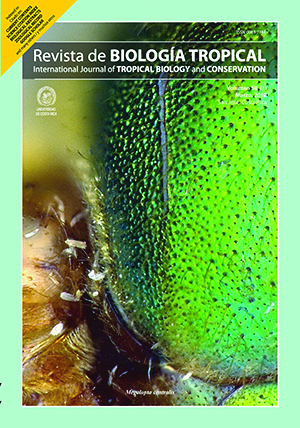Abstract
The estuarine clam Polymesoda solida is the main fishery resource in the Salamanca Island Natural Park. I sampled the clam in three interconnected lagoons (Poza Verde, El Torno and Atascosa) during the rainy period (April to November 2004). Sixty individuals were monthly collected by hand on each lagoon; 30 to analyze two condition indexes (relationship between body and shell weight and between soft dry and wet weight), yield (meat percentage) and length-weight relationships. Maturity of female gonad smears was assessed on the remaining individuals. Measures of salinity, tempera-ture, pH, dissolved oxygen, transparency and depth, were also taken at the collection places. Increases of the condition indexes occurred when the Magdalena River showed some decreases in its level, especially at Poza Verde and El Torno. The condition indexes were higher at 27-33mm, (range where maturity size was reached). Clams from Poza Verde, the lagoon nearest to the Magdalena River, had the highest values in condition indexes, yield, fresh weight and maturity frequency. Yield was directly correlated to the condition indexes and sexual maturity. The condition index (body weight/shell weight) showed a highest multiple regression coefficient with salinity, pH and transparency (R2=74%), indicating the relevance of the hydrological regime in the regulation of the condition of the organisms. P. solida seems to be more adapted to the lowest salinities of the system (0.0-0.4), corresponding to Poza Verde, where the influence of the Magdalena river is more direct and steady. Additionally, differences found between sites in the assessed variables, emphasize the importance of consider-ing spatial heterogeneity of this kind of lagoon estuaries, and should be taken into account for future fisheries management in the rainy period and conservation of P. solida populations.

This work is licensed under a Creative Commons Attribution 4.0 International License.
Copyright (c) 2010 Revista de Biología Tropical

